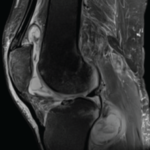In contrast, older human infections are often characterized by slow progression to disease, sometimes involving reactivation after many years of latent or asymptomatic infection; these characteristics have been proposed to reflect adaptation to low host population densities by allowing repletion of the reservoir of susceptible individuals.
MTB is blessed with both traits: crowded, dense populations have proved to be fertile killing fields for the organism, but in those situations where MTB is so adept in wiping out all of its infected hosts, it can still rely on its pattern of chronic progression, latency and reactivation for it to carry on in perpetuity.5
MTB infection is transmitted through aerosols, whereby droplet nuclei containing one to three bacilli are inhaled and penetrate deep into the lung. In the alveolar sacs, it is engulfed by alveolar macrophages; however, the bacilli have a range of systems to circumvent the antibacterial properties of the macrophage, allowing it to reside and replicate in a protected intracellular niche.6 As the bacterial load increases, T cells are recruited to the site of infection, where they attract and activate more macrophages in an effort to eradicate the pathogen. This escalation of the immune response leads to the generation of a granulomatous lesion, or tubercle, the hallmark of MTB pathology.
Most infected individuals can successfully contain the pathogen in these lesions, leading to a state of latent infection with no obvious clinical signs. However, depending on the host’s health and social milieu, the infection may pierce the protective barriers and infect the host. Among our most critical shields is the potent cytokine tumor necrosis factor (TNF), which is central to the pathogenesis of a host of inflammatory diseases. When tangling with TNF, tread carefully.
‘Modern experimental work on the production of models of autoimmune disease in laboratory animals is almost wholly the creation of Freund’s complete adjuvant.’ —Sir Macfarlane Burnet
Harnessing The Power of MTB
The scourge of TB intensified the need for better disease prevention strategies. Working together at the Pasteur Institute in Lille, France, Albert Calmette, MD, a bacteriologist, and Camille Guerin, DVM, a veterinarian, isolated a virulent strain of M. bovis (closely related to the human MTB) from the udder of an infected cow. There were some technical issues: mycobacterium cultures showed a strong tendency to clump, and to prevent adhesion, their recipe required the virulent bovine-type tubercle bacilli to be cultured in a medium consisting of cow bile, potatoes and glycerin, which allowed for a gradual loss of its virulence.7 However, the German occupation of Lille during World War I greatly increased the cost of potatoes and made it challenging for Drs. Calmette and Guerin to obtain suitable ox bile from the abattoir. By grace of the veterinary surgeons of the German occupying force, their cultures survived.8


